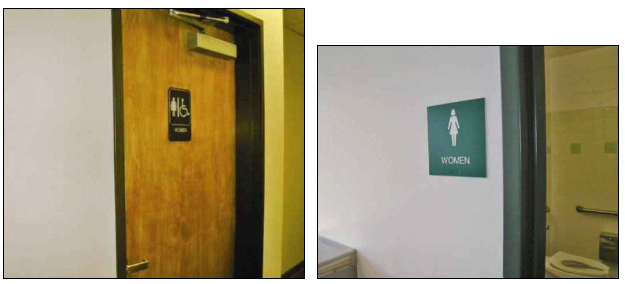Common Problems with Signs
Ø Some signs – such as permanent room signs – are required to have Braille, high contrast, and raised lettering and must be located on the wall to the latch side of the appropriate door. If they do not have these features, then some people who are blind or who have low vision will be unable to independently navigate around facilities.

The sign in the photo on the left is mounted on the door. When signs are mounted directly on doors that open out, people who are blind or who have low vision must stand in the swing of the door to read the signs, causing a potential for injury. For that reason, room signs are always required to be placed on the wall on the latch side of the door, centered at 60 inches high. The photo on the right shows the correct placement.

User Comments/Questions
Add Comment/Question